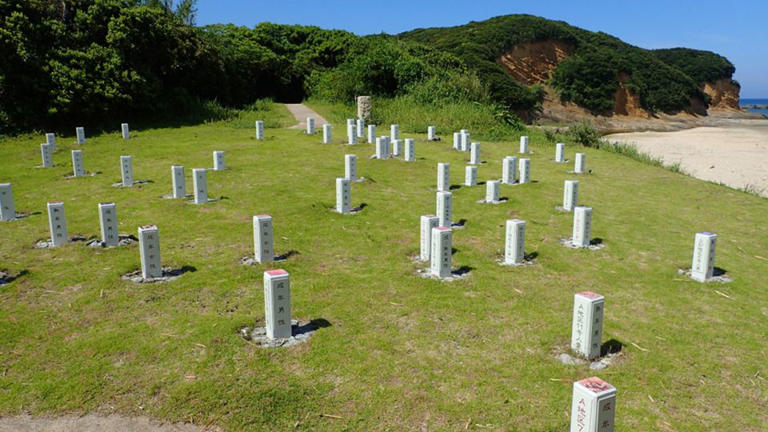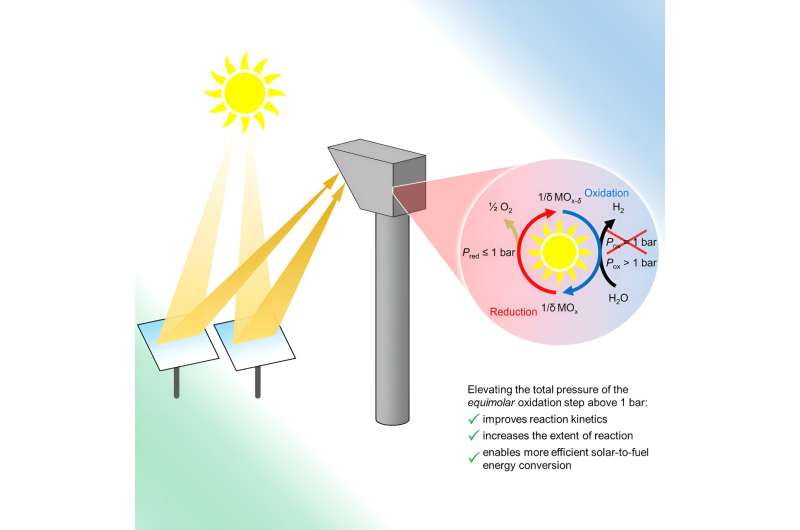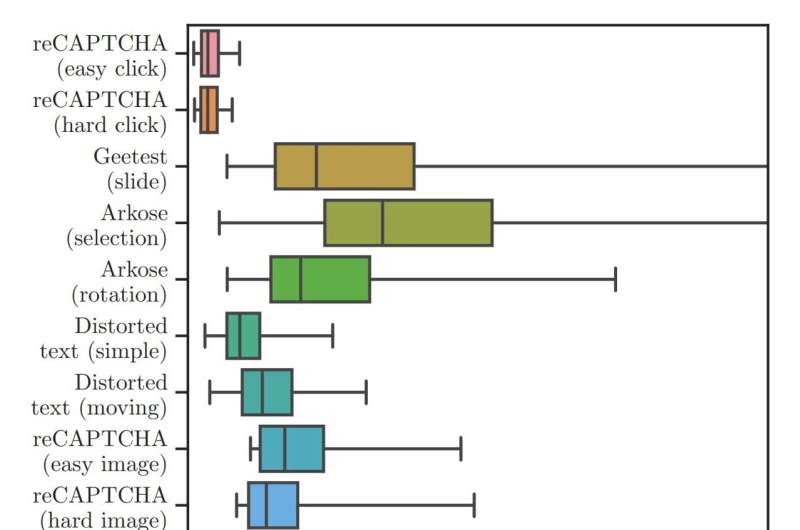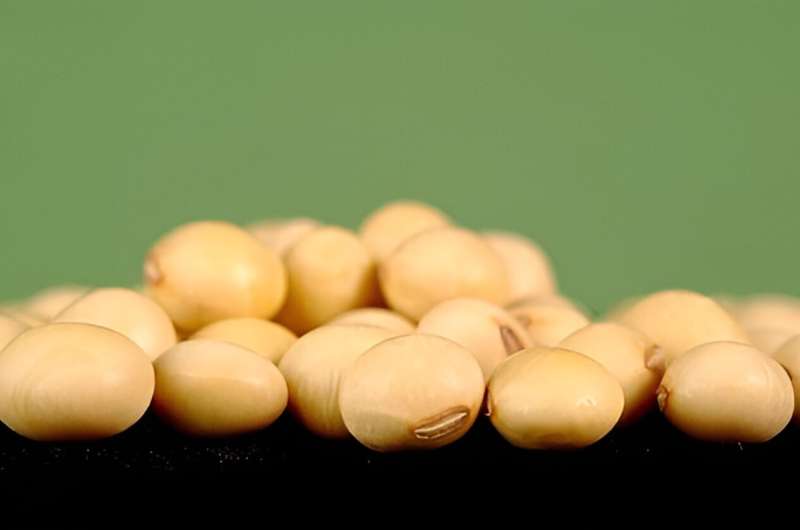Story by By Mindy Weisberger, CNN •8h
Modified skulls found in an ancient burial site in Japan were deliberately reshaped in both men and women as an expression of collective identity. The practice may also have helped the group to forge trade connections, a new study suggests.
In all the skulls, the normally rounded part at the back of the head was flattened and squared off, possibly through binding or being pressed against a flat surface during infancy.
The skulls belonged to individuals from the Hirota people, who lived on the southern Japanese island of Tanegashima from the third century to the seventh century. They were buried at a large grave site that was first excavated in the 1950s and then later in the early 2000s, researchers reported Wednesday in the journal PLOS One. The site held hundreds of skeletons, and 90% of the burials were richly adorned with glass beads and pendants, bracelets and beads made of shell, suggesting that all the burials held people of similar status.
The study team determined that Hirota people practiced cranial deformation “regardless of social rank or sex,” said coauthors Dr. Noriko Seguchi, an associate professor with the Faculty of Social and Cultural Studies at Kyushu University in Japan, and James Frances Loftus III, a postdoctoral research fellow at the university.
Shells adorning Hirota remains were abundant but were not local to the region. The artifacts originated thousands of kilometers south of the burial site, suggesting that Hirota people traded for them. It’s possible, the researchers suggested, that the Hirota cranial reshaping played a part in their trading success.
“We hypothesize that the Hirota people deformed their crania to preserve group identity and potentially facilitate long-distance trade of shellfish, as supported by archaeological evidence,” Seguchi and Loftus told CNN in an email.
An ancient and widespread practice
Intentional skull reshaping is found in burials across Asia, Europe and Mesoamerica. Modified skulls from medieval sites in Germany and Croatia show signs of deformation, and an elongated skull from China that’s 12,000 years old suggests that such modifications date to Neolithic times.
The practice was also widespread among the Maya in Central America and what is now Mexico, prior to the arrival of Europeans. Cranial deformation in Mayan people is particularly well documented, with carved figurines showing children wearing devices to shape their skulls, “such as a board on the forehead,” Seguchi and Loftus said. “This could have been a practice done by mothers or caretakers of infants as young as a couple of weeks or months old.”
Other researchers had previously speculated about the flattened Hirota skulls in Japan, but it was unknown whether the Hirota modifications were deliberate or merely a byproduct of other cultural practices.
For the new study, the scientists 3D-scanned and digitally modeled 19 adult Hirota skulls to conduct more detailed morphological analysis. The team compared them to adult skulls from two other ancient Japanese groups — Jomon and Doigahama — which had similar cranial deformations.

Ancient human remains are shown in a burial found at the Hirota ruins. Shell accessories found near the skeleton hint at regional culture and trade at the time. - The Kyushu University Museum© Provided by CNN
“We examined abnormalities in cranial sutures that might have formed during growth and development by utilizing a novel 3D visualization method of cranial surfaces,” Seguchi and Loftus explained. This new technique revealed an unprecedented level of detail in subtle bone shapes.
Intentionally modified skulls
In all three groups, male and female skulls were deformed. But in the Hirota skulls, the occipital region — a cranial bone at the back — was notably flatter than in Jomon and Doigahama skulls. Certain indentations were also identified in Hirota skulls but were absent in those of Jomon and Doigahama individuals. These depressions may have been left by binding practices that deformed the infant skulls, the scientists said.
The dramatic flatness of Hirota crania, the skull depressions and overall changes in bone structure corresponded with examples of extreme skull modification in cultures from the Americas. This told the researchers that Hirota people also deliberately modified their cranial shapes.

At the Hirota site, each marker indicates where burials were found along with the notes on their sex and approximate age group. - The Kyushu University Museum© Provided by CNN
The authors are hopeful that future excavations may uncover settlements that offer further evidence of the Hirota people’s daily lives, which will shed light on their motivations for cranial deformation.
“Through these findings, we believe we have begun the process of unravelling the still mysterious nature of the Hirota people, their culture, and potential trade practices,” Seguchi and Loftus said. “We hope that this study will open the eyes of researchers of this and other periods of Japanese prehistory to lines of thinking which allow us to view Japan through an international lens, seeing cultural practice as a fluid and changing phenomenon.”
Unveiling Japan's ancient practice of cranial modification: The case of the Hirota people in Tanegashima
An international team of researchers report that the Hirota people, who lived on the southern Japanese island of Tanegashima between the late Yayoi period to the Kofun period (3rd to 7th century CE), practiced cranial modification
Peer-Reviewed PublicationIMAGE: A PHOTOGRAPH OF THE ANCIENT HUMAN REMAINS FOUND AT THE HIROTA RUINS. A NOTABLE CHARACTERISTIC OF THE REMAINS IS THE WEARING OF MANY SHELL ACCESSORIES, INDICATIVE OF THE CULTURE AND TRADE OF THE REGION AT THE TIME. view more
CREDIT: THE KYUSHU UNIVERSITY MUSEUM
Fukuoka, Japan—A team of biological anthropologists and archaeologists from Kyushu University and the University of Montana have broken new ground in our understanding on the practice of intentional cranial modification, a practice found in numerous ancient civilizations around the world.
Publishing in PLOS ONE, the team reports that the Hirota people, who lived on the southern Japanese island of Tanegashima around the 3rd century to 7th century CE, also partook in the practice. Moreover, the study found no significant differences in cranial modification between sexes, indicating that both males and females practiced intentional cranial modification.
Cranial modification is a form of body alteration where the head of a person is pressed or bound, usually at an early age, to permanently deform the skull. The practice predates written history, and researchers theorize that it was performed to signify group affiliation or demonstrate social status.
"One location in Japan that has long been associated with cranial deformation is the Hirota site on the Japanese island of Tanegashima, in Kagoshima Prefecture. This is a large-scale burial site of the Hirota people who lived there during the end of the Yayoi Period, around the 3rd century CE, to the Kofun Period, between the 5th and 7th century CE." explains Noriko Seguchi of Kyushu University's Faculty of Social and Cultural Studies who led the study. "This site was excavated from 1957 to 1959 and again from 2005 to 2006. From the initial excavation, we found remains with cranial deformations characterized by a short head and a flattened back of the skull, specifically the occipital bone and posterior parts of the parietal bones."
However, while the site provided an ideal opportunity to study the phenomenon, it had remained unclear whether these cranial modifications had been intentional, or were simply the unintended result of other habits.
To conduct the study, the research group employed a hybrid approach, utilizing 2D images to analyze the shape of the skulls' outline, as well as 3D scans of their surface. The group also compared crania data from other archeological sites in Japan, such as the Doigahama Yayoi people in Western Yamaguchi, and the Kyushu Island Jomon people, who were the hunter-gatherer predecessors to the Yayoi people. Along with visually assessing skull morphology, the team gathered all this data and statically analyzed the contours and shapes between the skulls.
"Our results revealed distinct cranial morphology and significant statistical variability between the Hirota individuals with the Kyushu Island Jomon and Doigahama Yayoi samples," continues Seguchi. "The presence of a flattened back of the skull characterized by changes in the occipital bone, along with depressions in parts of the skull that connects the bones together, specifically the sagittal and lambdoidal sutures, strongly suggested intentional cranial modification."
The motivations behind this practice remain unclear, but the researchers hypothesize that the Hirota people deformed their crania to preserve group identity and potentially facilitate long-distance trade of shellfish, as supported by archaeological evidence found at the site.
"Our findings significantly contribute to our understanding of the practice of intentional cranial modification in ancient societies," concludes Seguchi. "We hope that further investigations in the region will offer additional insights into the social and cultural significance of this practice in East Asia and the world.
3D images of the skulls excavated from the Doigahama site (left) and the Hirota site (right)
CAPTION
3D images of skulls excavated from the Hirota site and the Doigahama site that the researchers used to compare skull morphology between the two groups. Notice that the skull from the Hirota site (right) has a more flattened back of the head compared to the skulls from the Doigahama site (left) indicating intentional cranial modification.
CREDIT
Seguchi Lab/Kyushu University
For more information about this research, see "Investigating intentional cranial modification: A hybridized two-dimensional/three-dimensional study of the Hirota site, Tanegashima, Japan" Noriko Seguchi, James Frances Loftus III, Shiori Yonemoto, Mary-Margaret Murphy PLOS ONE, https://doi.org/10.1371/journal.pone.0289219
About Kyushu University
Kyushu University is one of Japan's leading research-oriented institutes of higher education since its founding in 1911. Home to around 19,000 students and 8,000 faculty and staff, Kyushu U's world-class research centers cover a wide range of study areas and research fields, from the humanities and arts to engineering and medical sciences. Its multiple campuses—including one of the largest in Japan—are located around Fukuoka City, a coastal metropolis on the southwestern Japanese island of Kyushu that is frequently ranked among the world's most livable cities and historically known as Japan's gateway to Asia. Through its Vision 2030, Kyushu U will 'Drive Social Change with Integrative Knowledge.' Its synergistic application of knowledge will encompass all of academia and solve issues in society while innovating new systems for a better future.
JOURNAL
PLoS ONE
METHOD OF RESEARCH
Imaging analysis
SUBJECT OF RESEARCH
Not applicable
ARTICLE TITLE
Investigating intentional cranial modification: A hybridized two-dimensional/three-dimensional study of the Hirota site, Tanegashima, Japan
ARTICLE PUBLICATION DATE
16-Aug-2023




